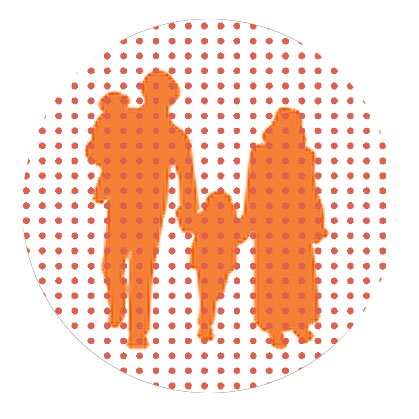Shut Down

If someone shuts down every time they are upset, how can you help them find their voice?

“M
y sister and I regularly go through these periods where we just stop talking to each other. Some sort of mess-up or misunderstanding will happen, and she’ll get insulted. That starts it. Next thing you know, she’s not talking to me. So I don’t talk to her.
“I know it sounds silly — we’re both grown women — but I learned a long time ago that there’s no point in trying to pull her out of her shell. I just wait until she starts acting normal again. Sometimes it takes months.”
Patterns of Communication
So why do some people talk endlessly when they’re angry and others can’t talk at all? And what happens when these two types marry each other?
“When Ahuva gets upset with me, she always wants to discuss it. For her this means sitting down and going over all the details of some ‘crime’ I committed, explaining how hurt she is and analyzing my motives. She’s not interested in an actual discussion because if I want to say anything, she’ll just use whatever I say to go on another tirade. Now I don’t bother speaking. And that also drives her crazy! She always ends up screaming at me, ‘Why are you just sitting there? Why don’t you SAY something?’ We’ve been married 23 years and this has always been our pattern.”
Twenty-three years of a communication pattern that isn’t working for either of them. This isn’t unusual. Couples find it hard to extricate themselves from negative communication patterns and to be objective about their own contribution to their difficulties.
Routinely responding to communication with aggressive, passive-aggressive, indifferent, hostile, defensive, or otherwise unpleasant responses, frequently produces a “shutter-downer.” And, of course, parents can similarly influence their children to become non-responders.
“When we were growing up, we were taught not to talk back. If we did something wrong, my mother or father would reprimand us and we were supposed to just stand there with our heads hanging down and absorb it. That might have been easy for my sisters to do, but I had a different temperament, and when I was really small, I’d answer back. WHACK! Right across the face every time! In those days, they called this ‘chinuch’ and eventually, I smartened up. After a while, I couldn’t open my mouth if I wanted to! Now, when someone’s upset with me, I still can’t talk. It’s like my body is bracing for that slap and my mouth just won’t open.”
Reprogramming
It’s a fact that many adults who now shut down and withdraw when angry or hurt, learned that it wasn’t safe to speak up in childhood. Parents can help their children avoid this unfortunate outcome by teaching them how to respectfully listen and how to respectfully express their own thoughts and feelings. When parents model this safe and correct way of speaking and listening, children grow up feeling patient enough to listen, confident enough to speak, and humble enough to communicate with consideration and respect.
Spouses or other relatives can help each other open up as well. Someone who interacts with a “shutter-downer” can give that person space until the inner storm passes. Then, an invitation to speak can be issued. The communicative partner can offer to metaphorically (or literally, if that will help) cover his or her mouth with masking tape to allow the reluctant communicator to speak without fear of interruption, complaint, or dismissal. Then, this person can offer a summary and validation of all that was said.
No further negotiation should occur until this first step has become a fully integrated new pattern between the communicators. Later, as confidence builds, normal back and forth negotiation can be added to the conversation.
Even with sufficient support, a person fearful and avoidant of expressing vulnerable feelings or of engaging in confrontation, may need to do plenty of personal work as well. Shutting down provides safety at the cost of closeness. An understanding of the cost/loss benefit needs to be developed, followed by a willingness to take a new risk, experience desensitization through exposure and practice, and thereby reap the benefits of personal wholeness and relationship health.
(Originally featured in Family First, Issue 800)
Oops! We could not locate your form.



